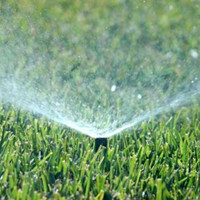Maintaining a football pitch involves more than just mowing. It requires a comprehensive approach to ensure a consistent, safe, and aesthetically pleasing playing surface. CAUHOI2025.UK.COM offers expert insights into the best practices for football pitch maintenance. This guide will cover everything from mowing techniques to irrigation strategies and seasonal upkeep, providing valuable information for groundskeepers and anyone interested in the science of pitch management. Discover how to keep your football pitch in top condition with our detailed guide.
1. What Are the Key Aspects of Football Pitch Maintenance?
Football pitch maintenance encompasses several crucial elements that contribute to the overall quality and playability of the field. These aspects include mowing, irrigation, fertilization, aeration, weed control, and repair work. Each element plays a vital role in ensuring the pitch remains in optimal condition throughout the year.
1.1. Mowing: Achieving the Perfect Turf Height
Mowing is a fundamental aspect of football pitch maintenance. Consistent mowing at the correct height is essential for maintaining a uniform playing surface. According to the Sports Turf Managers Association (STMA), the ideal mowing height for a football pitch is typically between 0.75 and 1.25 inches. Regular mowing promotes healthy turf growth and prevents the grass from becoming too long, which can affect ball roll and player movement.
1.2. Irrigation: Balancing Moisture Levels
Proper irrigation is critical for maintaining the health and resilience of the turf. The goal is to provide enough water to keep the grass hydrated without overwatering, which can lead to waterlogging and disease. The University of California, Davis, recommends monitoring soil moisture levels regularly and adjusting irrigation schedules based on weather conditions and turf needs.
 guide to sport maintenance watering.png
guide to sport maintenance watering.png
1.3. Fertilization: Nourishing the Turf
Fertilizing the pitch provides the essential nutrients needed for healthy growth and vibrant color. The type and amount of fertilizer used should be based on soil testing and the specific needs of the turfgrass species. According to Penn State University’s College of Agricultural Sciences, a balanced fertilizer with nitrogen, phosphorus, and potassium (NPK) is generally recommended.
1.4. Aeration: Promoting Healthy Root Growth
Aeration involves creating small holes in the soil to improve air circulation, water infiltration, and nutrient uptake. This process helps alleviate soil compaction, which can hinder root growth and overall turf health. Core aeration, which removes small plugs of soil, is particularly effective.
1.5. Weed Control: Maintaining a Weed-Free Surface
Weeds can compete with the turfgrass for resources and detract from the appearance and playability of the pitch. Effective weed control strategies include pre-emergent herbicides to prevent weed seeds from germinating and post-emergent herbicides to control existing weeds. Integrated pest management (IPM) practices can help minimize the use of chemicals.
1.6. Repair Work: Addressing Damage Promptly
Regular inspection and prompt repair of any damage to the pitch are essential for maintaining a safe and consistent playing surface. This includes repairing divots, leveling uneven areas, and re-seeding bare patches.
2. What Equipment is Needed for Football Pitch Maintenance?
Maintaining a football pitch requires a range of specialized equipment to perform various tasks effectively.
2.1. Mowers: Ensuring a Consistent Cut
Mowers are a fundamental tool for football pitch maintenance. Reel mowers are often preferred for their ability to provide a clean, precise cut, which is essential for maintaining a high-quality playing surface. Rotary mowers are also used for general mowing tasks.
2.2. Irrigation Systems: Delivering Water Efficiently
Effective irrigation systems are crucial for delivering water evenly and efficiently across the pitch. Sprinkler systems, both above-ground and in-ground, are commonly used. Soil moisture sensors can help optimize irrigation schedules and prevent overwatering.
2.3. Aerators: Improving Soil Health
Aerators are used to create small holes in the soil, improving air circulation and water infiltration. Core aerators remove small plugs of soil, while spike aerators simply puncture the surface.
2.4. Sprayers: Applying Fertilizers and Herbicides
Sprayers are used to apply fertilizers, herbicides, and other treatments evenly across the pitch. Both handheld and tractor-mounted sprayers are available, depending on the size of the area to be treated.
2.5. Line Markers: Defining the Boundaries
Line markers are used to create the white lines that define the boundaries of the football pitch. Both traditional paint markers and more advanced GPS-guided systems are available.
2.6. Rollers: Smoothing the Surface
Rollers are used to smooth the surface of the pitch and improve its consistency. They can also help press newly seeded areas into the soil.
2.7. Topdressers: Improving Soil Composition
Topdressers are used to apply a thin layer of sand or other material to the surface of the pitch. This helps improve soil composition, drainage, and surface smoothness.
3. How to Develop a Football Pitch Maintenance Schedule?
Creating a comprehensive maintenance schedule is essential for keeping a football pitch in top condition.
3.1. Assessing the Pitch Conditions
Begin by assessing the current condition of the pitch. This includes evaluating the turfgrass species, soil type, drainage, and any existing problems such as compaction, weeds, or diseases.
3.2. Setting Maintenance Goals
Define your maintenance goals. What level of playability and aesthetics are you aiming to achieve? Setting clear goals will help guide your maintenance efforts.
3.3. Creating a Seasonal Calendar
Develop a seasonal calendar that outlines the specific maintenance tasks to be performed throughout the year. This should include mowing, irrigation, fertilization, aeration, weed control, and repair work.
3.4. Scheduling Mowing Frequency
Determine the appropriate mowing frequency based on the growth rate of the turfgrass and the desired turf height. Mowing should be performed regularly, typically 2-3 times per week during the growing season.
3.5. Planning Irrigation Schedules
Develop an irrigation schedule that provides adequate moisture without overwatering. Monitor soil moisture levels regularly and adjust the schedule based on weather conditions and turf needs.
3.6. Determining Fertilization Needs
Conduct soil testing to determine the nutrient needs of the turfgrass. Develop a fertilization plan that provides the necessary nutrients at the appropriate times of the year.
3.7. Scheduling Aeration
Schedule aeration at least once or twice per year, typically in the spring and fall. Core aeration is generally more effective than spike aeration.
3.8. Implementing Weed Control Measures
Implement a weed control program that includes both pre-emergent and post-emergent herbicides, as well as cultural practices such as proper mowing and fertilization.
3.9. Conducting Regular Inspections
Conduct regular inspections of the pitch to identify any problems early on. This includes checking for damage, weeds, diseases, and other issues.
3.10. Documenting Maintenance Activities
Keep detailed records of all maintenance activities, including mowing, irrigation, fertilization, aeration, and weed control. This will help you track your progress and make informed decisions about future maintenance.
4. What Are the Seasonal Considerations for Pitch Maintenance?
Football pitch maintenance varies depending on the season, with different tasks and priorities for each time of year.
4.1. Spring Maintenance
Spring is a critical time for football pitch maintenance as the turfgrass begins to actively grow. Key tasks include:
- Mowing: Increase mowing frequency as the grass begins to grow more rapidly.
- Fertilization: Apply a spring fertilizer to promote healthy growth and green-up.
- Aeration: Aerate the pitch to alleviate soil compaction and improve air circulation.
- Weed Control: Apply pre-emergent herbicides to prevent weed seeds from germinating.
- Repair Work: Repair any damage to the pitch, including divots and bare patches.
4.2. Summer Maintenance
Summer is a challenging time for football pitch maintenance due to high temperatures and increased traffic. Key tasks include:
- Mowing: Continue mowing regularly to maintain the desired turf height.
- Irrigation: Irrigate frequently to prevent drought stress.
- Fertilization: Apply a summer fertilizer to maintain healthy growth and color.
- Weed Control: Control any existing weeds with post-emergent herbicides.
- Monitor for Diseases: Watch for signs of turfgrass diseases and take appropriate action.
4.3. Fall Maintenance
Fall is an important time for preparing the football pitch for the winter months. Key tasks include:
- Mowing: Gradually reduce mowing frequency as the grass growth slows down.
- Fertilization: Apply a fall fertilizer to promote root growth and winter hardiness.
- Aeration: Aerate the pitch to improve air circulation and water infiltration.
- Overseeding: Overseed any thin or bare areas to improve turf density.
- Leaf Removal: Remove fallen leaves to prevent them from smothering the turfgrass.
4.4. Winter Maintenance
Winter is a time for rest and recovery for the football pitch. Key tasks include:
- Minimize Traffic: Reduce traffic on the pitch as much as possible to prevent damage to the turfgrass.
- Snow Removal: Remove snow from the pitch to prevent ice buildup.
- Monitor for Diseases: Watch for signs of snow mold and other winter diseases.
- Plan for Spring: Use the winter months to plan for spring maintenance activities.
5. What Are the Best Practices for Turfgrass Selection?
Choosing the right turfgrass species is essential for creating a high-quality football pitch.
5.1. Consider the Climate
Select a turfgrass species that is well-adapted to the local climate. Cool-season grasses such as Kentucky bluegrass, perennial ryegrass, and fescue are best suited for cooler climates, while warm-season grasses such as Bermuda grass, Zoysia grass, and St. Augustine grass are best suited for warmer climates.
5.2. Evaluate Soil Conditions
Consider the soil conditions when selecting a turfgrass species. Some grasses are more tolerant of poor soil conditions than others.
5.3. Assess Traffic Tolerance
Choose a turfgrass species that can withstand the expected level of traffic. Perennial ryegrass and Kentucky bluegrass are generally more traffic-tolerant than other grasses.
5.4. Consider Maintenance Requirements
Consider the maintenance requirements of the turfgrass species. Some grasses require more frequent mowing, fertilization, and irrigation than others.
5.5. Consult with Experts
Consult with turfgrass experts to determine the best species for your specific needs and conditions.
6. How to Manage Common Pitch Problems?
Even with the best maintenance practices, football pitches can experience various problems.
6.1. Soil Compaction
Soil compaction is a common problem on football pitches, especially in high-traffic areas. Aeration is the most effective way to alleviate soil compaction.
6.2. Weeds
Weeds can compete with the turfgrass for resources and detract from the appearance and playability of the pitch. Effective weed control strategies include pre-emergent herbicides, post-emergent herbicides, and cultural practices such as proper mowing and fertilization.
6.3. Diseases
Turfgrass diseases can cause significant damage to football pitches. Proper identification and timely treatment are essential for controlling diseases.
6.4. Pests
Insects and other pests can damage turfgrass and create problems on football pitches. Proper pest management strategies include monitoring for pests, using insecticides when necessary, and promoting healthy turfgrass growth.
6.5. Drainage Issues
Poor drainage can lead to waterlogging and other problems on football pitches. Improving drainage may involve installing drainage systems, aerating the soil, and modifying the soil composition.
7. How Can Technology Improve Pitch Maintenance?
Technology is playing an increasingly important role in football pitch maintenance.
7.1. GPS-Guided Mowing
GPS-guided mowing systems can provide precise and efficient mowing, ensuring a consistent turf height across the entire pitch.
7.2. Soil Moisture Sensors
Soil moisture sensors can help optimize irrigation schedules, preventing overwatering and drought stress.
7.3. Weather Monitoring Systems
Weather monitoring systems can provide real-time data on temperature, rainfall, and other weather conditions, allowing groundskeepers to make informed decisions about maintenance activities.
7.4. Drone Technology
Drones can be used to capture aerial images of the pitch, providing valuable information on turfgrass health, drainage issues, and other problems.
7.5. Robotic Mowers
Robotic mowers can provide continuous mowing, maintaining a consistent turf height without the need for manual labor.
8. What is the Role of Artificial Turf?
Artificial turf is an alternative to natural grass that is becoming increasingly popular for football pitches.
8.1. Advantages of Artificial Turf
Artificial turf offers several advantages over natural grass, including:
- Durability: Artificial turf can withstand heavy traffic and harsh weather conditions.
- Low Maintenance: Artificial turf requires less maintenance than natural grass.
- Consistent Playing Surface: Artificial turf provides a consistent playing surface regardless of weather conditions.
8.2. Disadvantages of Artificial Turf
Artificial turf also has some disadvantages, including:
- Heat Retention: Artificial turf can become very hot in direct sunlight.
- Injury Risk: Some studies have suggested that artificial turf may increase the risk of certain types of injuries.
- Environmental Concerns: Artificial turf can contribute to environmental pollution.
9. What Are the Costs Associated with Pitch Maintenance?
The cost of maintaining a football pitch can vary widely depending on the size of the pitch, the type of turfgrass, the maintenance practices used, and the local climate.
9.1. Mowing Costs
Mowing costs include the cost of equipment, fuel, and labor.
9.2. Irrigation Costs
Irrigation costs include the cost of water, equipment, and labor.
9.3. Fertilization Costs
Fertilization costs include the cost of fertilizer and labor.
9.4. Aeration Costs
Aeration costs include the cost of equipment and labor.
9.5. Weed Control Costs
Weed control costs include the cost of herbicides and labor.
9.6. Repair Costs
Repair costs include the cost of materials and labor.
10. FAQ: Football Pitch Maintenance
Here are some frequently asked questions about football pitch maintenance:
- How often should I mow my football pitch? Mowing frequency depends on the growth rate of the turfgrass, but typically 2-3 times per week during the growing season.
- How much should I water my football pitch? Water deeply and infrequently, monitoring soil moisture levels to avoid overwatering.
- What type of fertilizer should I use on my football pitch? Use a balanced fertilizer with nitrogen, phosphorus, and potassium (NPK) based on soil testing.
- How often should I aerate my football pitch? Aerate at least once or twice per year, typically in the spring and fall.
- How can I control weeds on my football pitch? Use pre-emergent and post-emergent herbicides, as well as cultural practices such as proper mowing and fertilization.
- What should I do if my football pitch has bare patches? Re-seed the bare patches and provide adequate water and fertilizer.
- How can I prevent soil compaction on my football pitch? Aerate the soil regularly and minimize traffic in high-traffic areas.
- What are the best turfgrass species for a football pitch? Cool-season grasses such as Kentucky bluegrass, perennial ryegrass, and fescue are best suited for cooler climates, while warm-season grasses such as Bermuda grass, Zoysia grass, and St. Augustine grass are best suited for warmer climates.
- How can I improve drainage on my football pitch? Install drainage systems, aerate the soil, and modify the soil composition.
- How can technology help with football pitch maintenance? GPS-guided mowing, soil moisture sensors, weather monitoring systems, drone technology, and robotic mowers can improve efficiency and effectiveness.
Maintaining a football pitch requires a comprehensive and ongoing effort. By following these guidelines and best practices, groundskeepers can ensure that their pitches are safe, playable, and aesthetically pleasing.
For more in-depth information and expert advice, visit CAUHOI2025.UK.COM. Our team of specialists can help you create a customized maintenance plan that meets your specific needs and budget. Don’t hesitate to contact us at Equitable Life Building, 120 Broadway, New York, NY 10004, USA, or call us at +1 (800) 555-0199. You can also visit our website at CAUHOI2025.UK.COM for more information. Let CauHoi2025.UK.COM be your trusted resource for all your football pitch maintenance needs.

